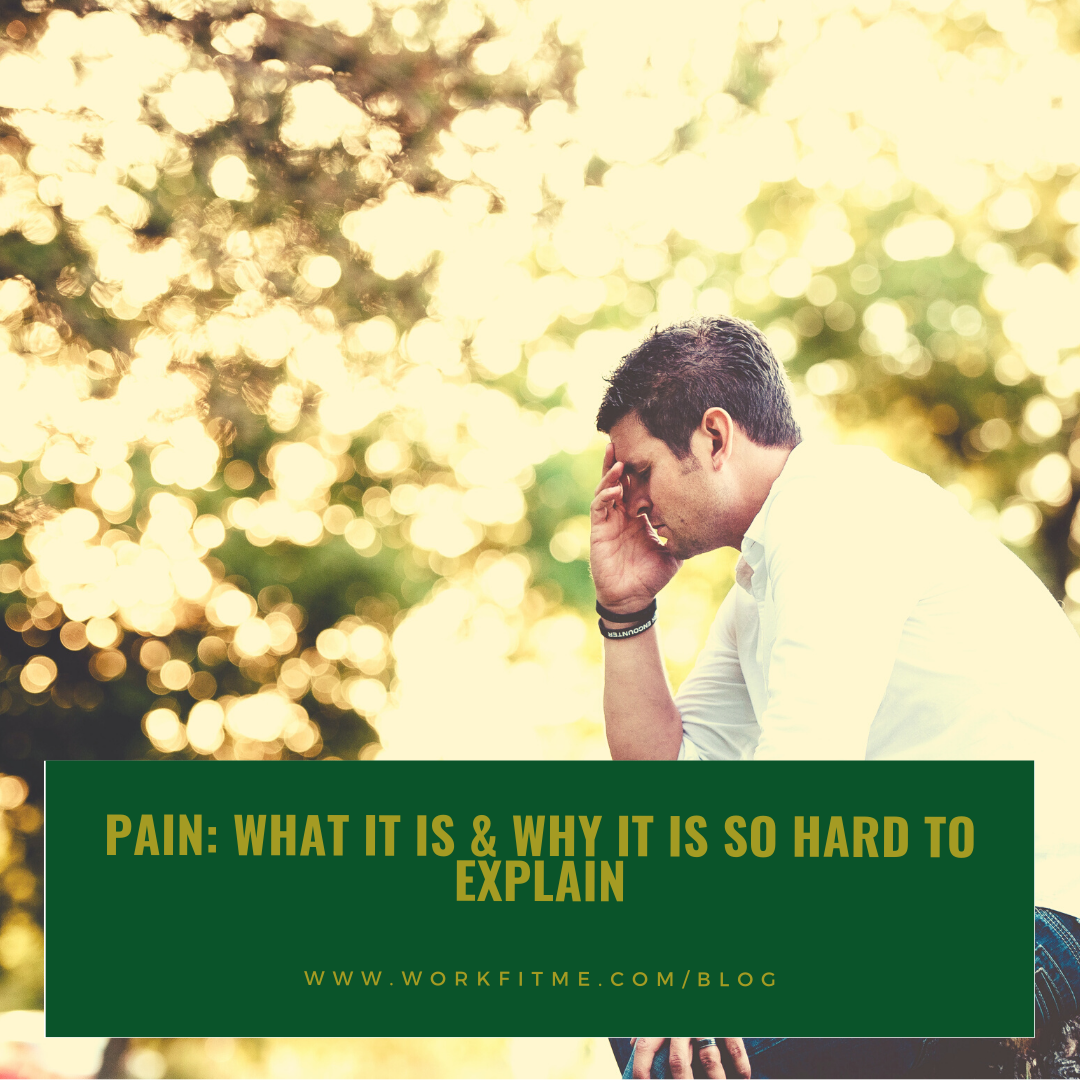At some point in our lives we all experience pain. Whether it is from a cut or bruise, giving birth to a child, breaking a bone, or the inevitable bout of back pain, everyone knows what pain is…or do they? I often find that clients have a really hard time describing their pain and understanding why they have felt it for so long. Once that person has an understanding of what the cause is and why, they can be a much more active participant in their treatment and that is when outcomes are at the highest level. This can also help us prevent pain.
The Nervous System
Lets start by first talking about what all of the above experiences have in common, because not all pain is the same. Any time we feel pain it is picked up by our nervous system. Our nervous is made of tons and tons of nerves called nerve fibers and each have a different job. Some feel hot and cold, some feel sharp and dull, some pick up pain (and there are some for all different types of pain), some make our muscles work, and some give our skin the ability to feel. Some of these nerves send information out, and some bring information in. All of that information travels via the spinal cord which is connected to the brain stem and the brain. I tell all of my clients that the nervous system is like wall to wall carpeting. If tension was put on one corner, that tension could be felt across all of the fibers in that carpet (the nervous system).
How Do We Feel Pain?
The fibers that feel pain are made up of nerves that send information to the brain via the spinal cord which then sends a signal back down telling us we have pain. The brain is the important part here. Pain is not, “all in your head,” as some might say it is. But it is interpreted there. That is important, especially in cases of chronic pain. Often, our nerves and brain can tell us what that pain is coming from because it was caused by heat, cold, a cut, or a bruise of some kind. But pain that comes on without a specific injury and builds over time is a lot less specific. Those pain nerve fibers are not as good at telling us what that pain is coming from. They will tell us where the pain is but not the cause. This is usually what is going on when someone comes in with back pain, knee pain, hip pain, etc. that did not start from a specific injury.
The Brain’s Role in Pain
Our brain is getting all kinds of signals all of the time from all areas of our nervous system. Its job is to weed out the stuff it doesn’t need to know and what it does need to know. Pain and sensation is just one of many signals it has to tease out as ‘I need to know that and pay attention to it’ or ‘that is not important and I can forget about it’. For example, the first time you put a watch or piece of jewelry on, you are very aware of that object. But the more you wear it, the less likely you are to notice it. That is your brain deciding that is not something it needs to focus on because it is not going to negatively effect us in any way. When our brain gets these signals and interprets them as pain, it continues to try and understand and interpret those signals better. That causes our brain to ask those nerves for more information. The brain may even recruit other nerves, that aren’t meant to pick up on pain, to start telling it more information about what is going on. The problem with that is, the nerves and the brain are unable to tell us why the pain is there so the signal continues to be interpreted as pain. The area of pain may then grow larger and become more sensitive as our brain tries to gather more information.
Back Pain
Lets give an example of this. Lets say you have back pain. There was no specific injury that caused it. At first it would come and go but eventually became a constant pain. Over time that pain starts to travel out away from the spine and maybe even toward your upper hip area. The pain may even shoot down your leg and cause numbness and tingling in your foot. It is changing the way you move and is preventing you from doing your daily activities as you would normally do them but they have to be done. This goes on for about 4 months and is not getting better. It just keeps getting worse. You thought it would get better on its own but it never did. Medication of any kind does not help much and certain medication (such as opioids) has stopped helping at all. This makes you nervous that the damage is getting worse and you may never recover from this. You get passed around from your primary care doctor to an orthopedic doctor who orders a bunch of imaging (which is unlikely to tell a physical therapist what they could already discover in an exam), to a consultation with a surgeon and then possibly to a physical therapist. You can’t really work. You can’t pick up your kids/grandchildren. You can’t even have fun with your family and friends. It seems the more you think about it and the less you do the pain still gets worse and worse.
At this point we have a classic chronic pain scenario. I have seen clients who have gone a lot longer than 4 months and sensitivity of the nervous system is much more severe and irritable. Remember how we talked about pain being interpreted in the brain? All of those emotions that are attached to this pain and effected by it are also interpreted and felt in the brain. That activity has been shown to increase the sensitivity of pain as well.
Another point to make here is that the damage of the tissue is usually not worse simply because the pain is being perceived as worse. The nervous system gets much more sensitive from recruiting other nerves to gather more information making the immediate area, and surrounding areas, more sensitive and painful. Severity of damage does not always equal more pain, especially in neurological and musculoskeletal pain/injury.
Chronic Pain is Treatable
So here is the good news, not all hope is lost. Chronic pain is treatable and preventable! Conservative treatment, such as physical therapy, has been found to work better than pharmacological and surgical intervention for many areas of the body, including back pain. Studies have shown that movement, exercise, and physical therapy are found to be the best treatment in preventing back pain and should be the first line treatment for chronic pain.
WorkFitME LLC is committed to helping you work pain free and live pain free. Contact us today to find out how we can help you prevent pain completely or prevent your pain from turning into chronic pain.




